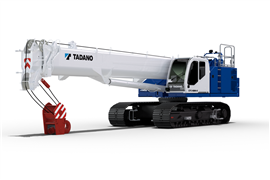Quality data is key
30 April 2008
The cyclical nature of the insurance business accounts for interest in a wide variety of services that rise and fall in response to market conditions. Th is is the case with drafting insurance specifications (specs), particularly in the high hazard groups of our industry. During the extended soft market of 1990s, underwriters had little interest in insurance specifications. Brokers could secure favorable pricing just by completing basic pages of an ACORD application.
Most brokers, however, will attest that times have changed dramatically. Today's brokers have had to reacquire the skill of completing comprehensive specs in an environment that no longer sees specs as a luxury, but as a critical aspect of an overall marketing strategy to ensure coverage accuracy and a strategic tool to secure the most competitive terms for your company. With this in mind, it is important to determine what it takes to get your account to the “top of the pile” of an underwriter's submissions, realizing that everyone is shopping insurance in today's changing market, and most underwriters are overworked and understafied.
For an insurance specification, regardless of type, underwriters typically want certain basic information. In addition, underwriters want to know the broker has a good feel for the account and the industry specialized in. They require evidence of this knowledge in the form of the specification document. They need to determine if adequate information is provided to make a prudent underwriting decision.
While core considerations may vary slightly depending on the carrier and account specifics, general requirements are often the same. An area on every underwriter's radar screen, is the need for quality account data. Presentation of quality data is at the heart of most successful placements in today's insurance market. As Mike Leamanczyk, chief underwriting off cer for Special Risk Services Group puts it, “We focus on the overall quality of the information, not just the boilerplate and filler material to provide our most competitive terms for SC&RA members coverages.”
Quality data
The first place underwriters look to determine the quality of the submission is the loss data. For most underwriters the specs begin and end with the loss data. Some underwriters have developed specific criteria they use to move through their “due diligence process” and a comprehensive display of currently valued, hard copy loss data for a minimum of five years gives underwriters the highest comfort level to offer the most competitive.
But it is more than just updated carrier loss runs. In addition to currently valued loss details, underwriters trend and develop all open claim reserves, in accordance with various actuarial tables, to determine most probable claim outcomes.
The other major issue is “large loss analysis reports”, provided by brokers most familiar with the account's history, including correspondence to previous insurers to secure the most up to date status of claims valued at $ 25,000 or greater. According to Leamanczyk, “Often times we find out claims that have recently settled are still showing as open reserves and more often than not they have closed out below the reserves.”
Lastly, specific information needs to be provided on what steps have been taken by the SC&RA member company to minimize these types of claims from occurring in the future.
Just the beginning
Detailed claims data is critical, it is just the beginning of information needed to get the most favorable pricing. The exposure basis and the corresponding premiums over the last five years allow an underwriter to quickly determine the overall profitability of your account.
In addition, providing underwriters with departmental breakdowns of payroll and revenues will allow them to use lower rating factors for the lower hazard elements. Leamanczyk indicates, “You'd be surprised about how many different categories of operation exist, even in a mid–sized crane and rigging company. You may come across an account that has transportation and setup–operated crane rental versus bare crane rental–rigging and dismantlement. Each of these categories have separate and distinct rates based on hazard levels, so you can reduce an account's bottom line costs with better details.”
Other important elements of an underwriter's decision–making process are a complete description of the account's safety and risk management program, including personnel, awards, and samples of the type of loss control activities.
Lastly, regardless of the type of exposure, all underwriters are concerned with contract management. Typically, contracts determine responsibility, which most often equates to liability. When an underwriter considers the high hazard nature of the specialized carriers and rigging industry they will be keen on understanding who, how and when your company contracts with others as part of ongoing operations.
STAY CONNECTED


Receive the information you need when you need it through our world-leading magazines, newsletters and daily briefings.
CONNECT WITH THE TEAM











